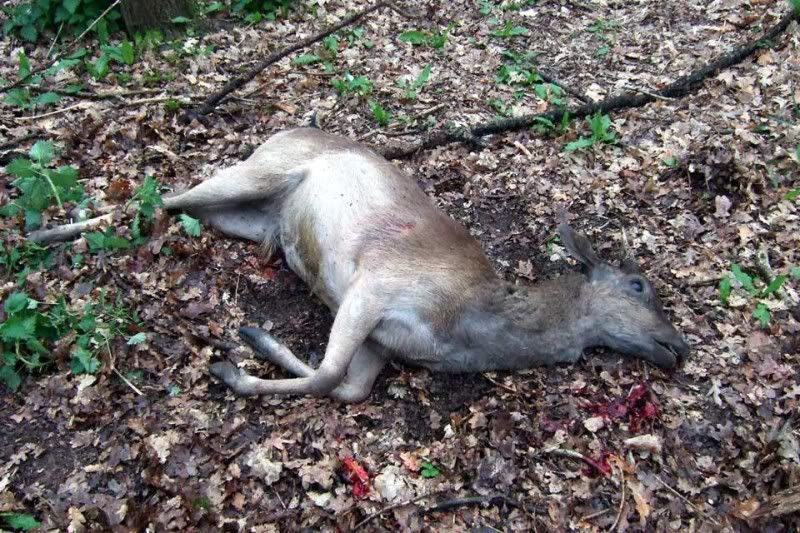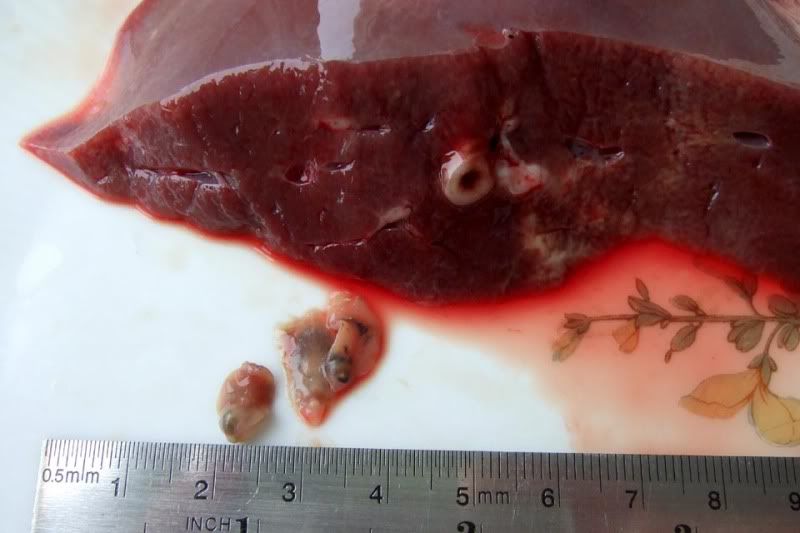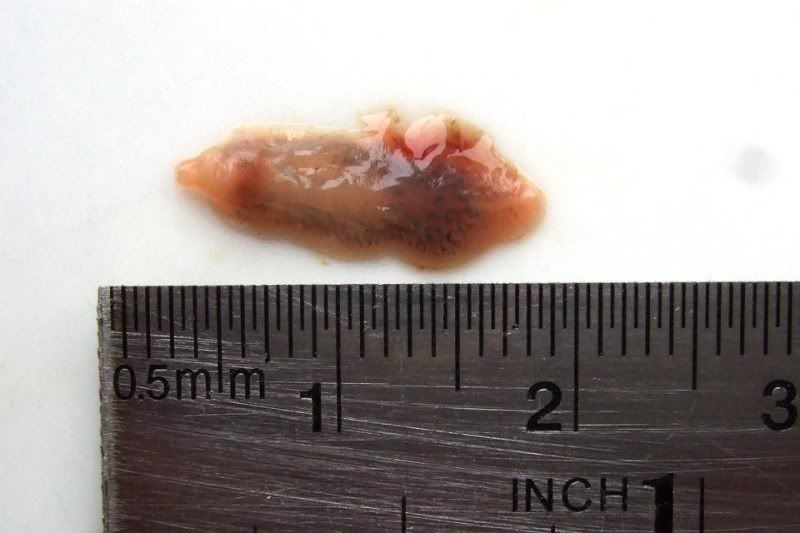Shot a healthy looking fallow buck this morning. During the gralloch, I noticed the liver was mottled at one margin and so at home I dissected it in slices and found three flukes. Nothing else worrying found during gralloch or post-mortem; nodes, lungs etc. all OK.
Here is the deer:

Here are some pics of the liver and the flukes therin. Note the thickened wall of duct in the middle pic.



I am under the impression the flukes are not transmissable to humans, though I am not planning to eat the liver! Fascioloides magna certainly isn't transmissable but these flukes look different.
I am planning on eating the venison but will leave the deer to hang while researching further. Thanks for any info, folks.
Happy Easter,
Xav
Here is the deer:

Here are some pics of the liver and the flukes therin. Note the thickened wall of duct in the middle pic.



I am under the impression the flukes are not transmissable to humans, though I am not planning to eat the liver! Fascioloides magna certainly isn't transmissable but these flukes look different.
I am planning on eating the venison but will leave the deer to hang while researching further. Thanks for any info, folks.
Happy Easter,
Xav


 but the coal tar stuff does get a bad rep these days
but the coal tar stuff does get a bad rep these days 